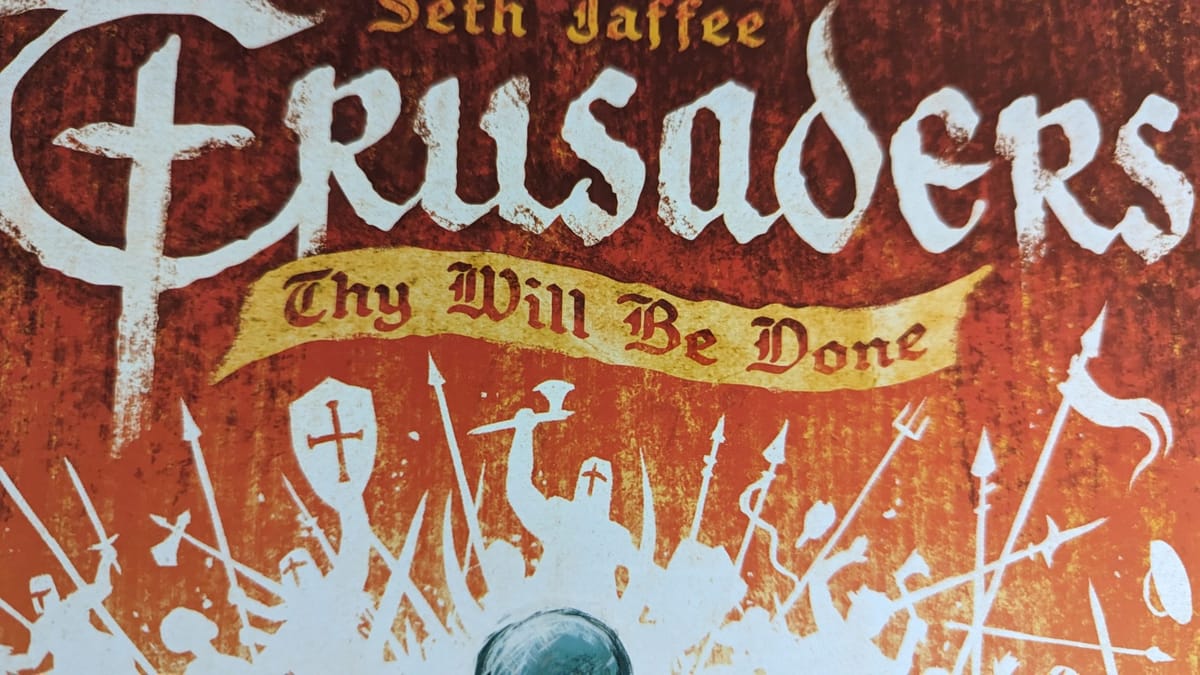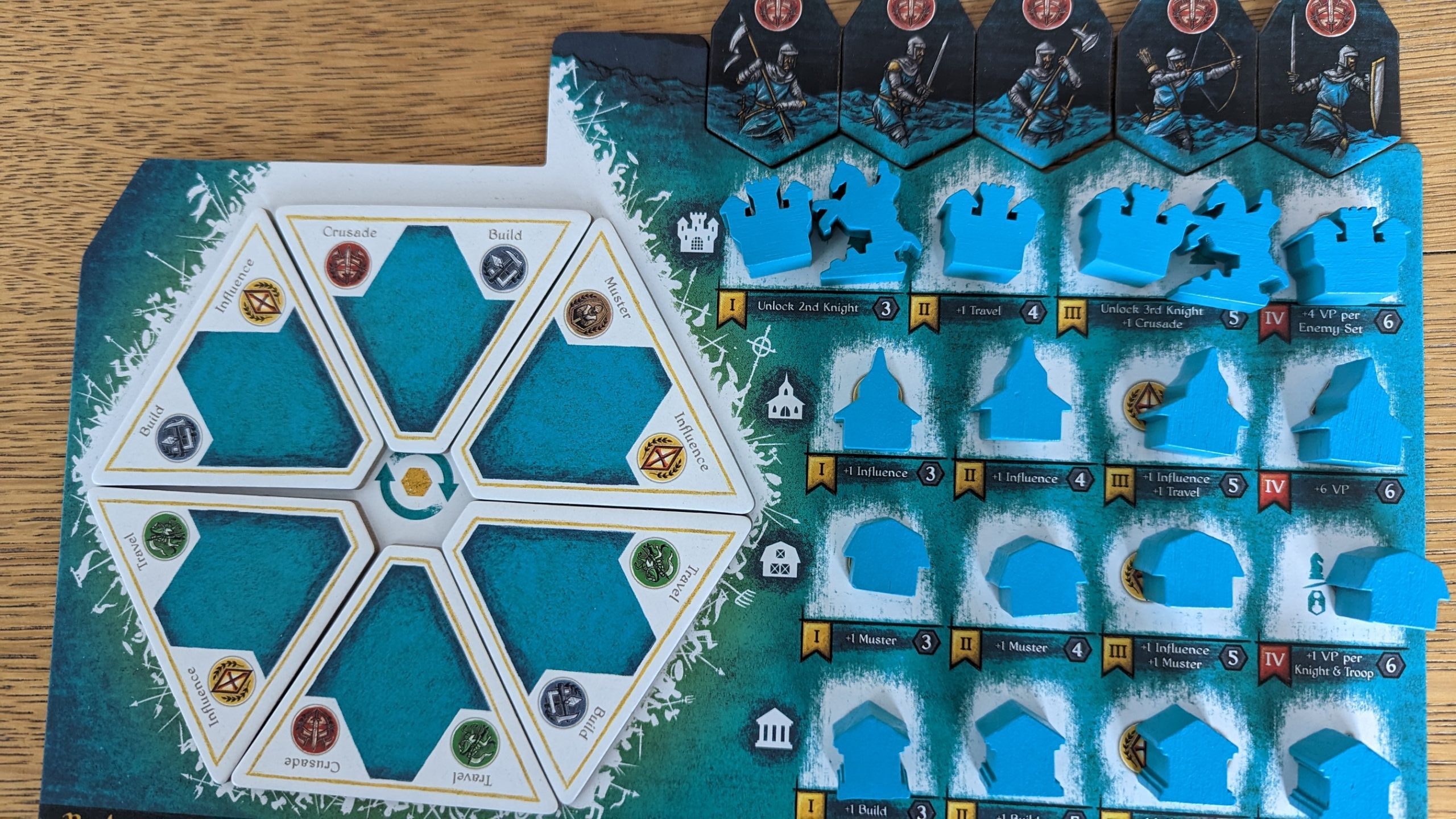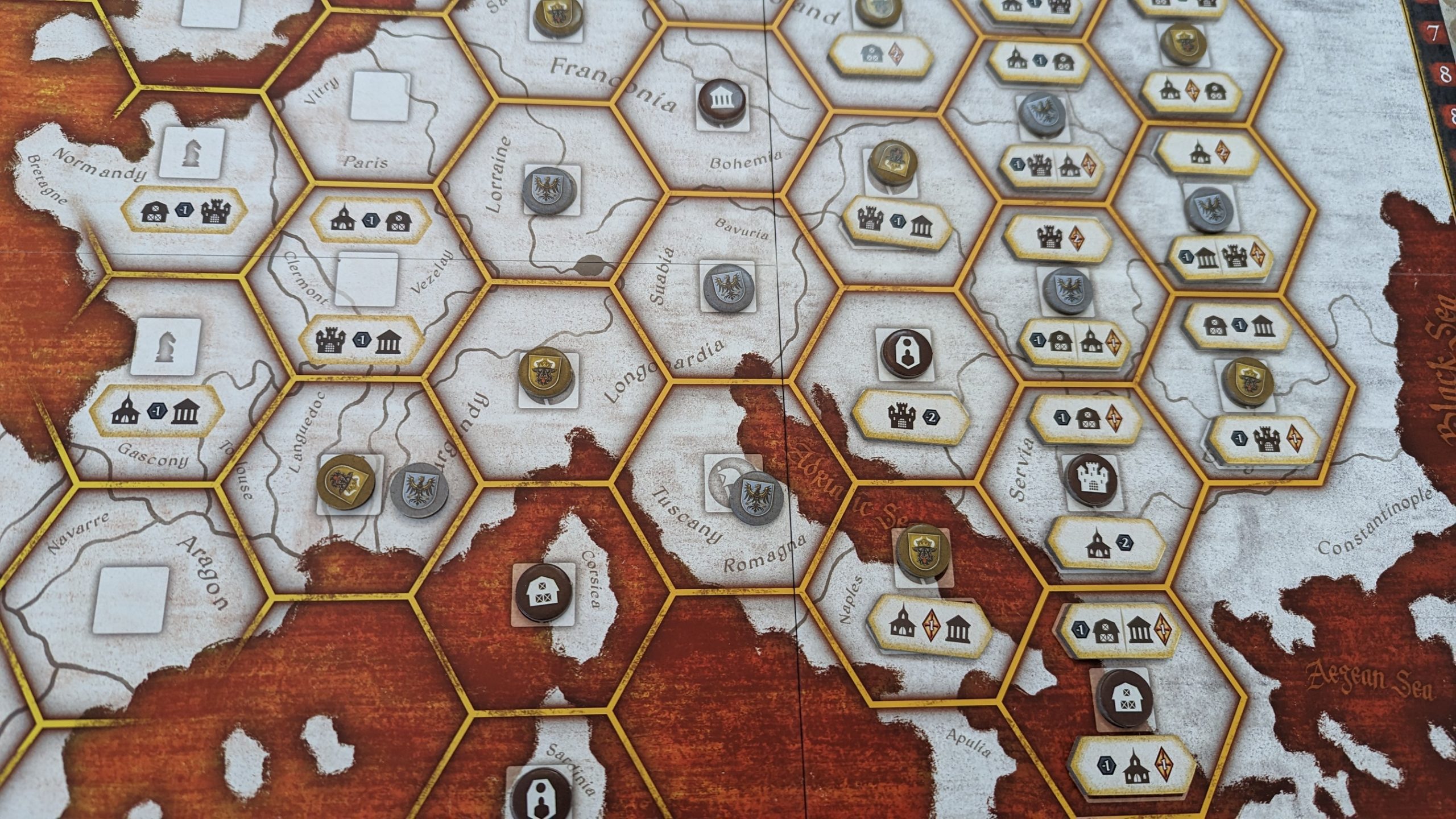
Crusaders wears its inspiration on its sleeve. In the rule book, Seth Jaffee stops just short of naming Feld’s legendary Trajan and its core rondel mancala hybrid mechanic. Trajan is the heaviest of heavy euros, with its six separate subgames and multi-colored mancala tokens that activate bonuses if they land in appropriately colored bowls. Crusaders attempts to streamline the experience and trim the playtime down to an all-important hour or so. Problem is, a lot of the wheat winds up getting thrown away with the chaff.

Play is straightforward enough on its face. On your turn, you pick a wedge, resolve its action with strength equal to the number of tokens on it plus whatever applicable bonuses, and then distribute those tokens one by one around your rondel, mancala-style. The actions themselves are equally straightforward, with travel moving one of your knight pawns a hex per strength, with moving out of a hex containing an enemy token taking an extra point. Influence has you grabbing an equal number of VPs out of the bank, easy enough. Mustering flips your lowest level troop as long as you have the required strength. Building lets you plop down the lowest of one of your four building types in your knight’s hex that doesn’t already have a building or enemy in it. Finally, crusading lets you kill off an enemy token you share a hex with, as long as you meet or exceed its strength. Defeating enemies works differently depending upon its type: Saracens have a set strength of 6 and will give you the bonus action depicted on the token, but Slavs and Prussians move up their respective strength tracks and reward VP equal to their strength when killed. Alternatively, players can opt to upgrade a tile, flipping it so it can be used in the future for two actions instead of one, and then distribute the tokens from any wedge as if it had been activated. In his design notes in the rulebook, Jaffee says upgrades were implemented to lessen the hit of turns where you have to redistribute tokens without taking actions. While this is certainly an admirable goal, it makes me question how thoroughly it was playtested, because in practice, it winds up creating a huge skill gap between players who immediately grasp the game or have played it before and those that need a few rounds playing with the systems to figure it out. Upgraded wedges are actually best used as an early game investment into greater efficiency, as you can simultaneously get tokens where you want them and turn a wedge’s activation from a one action turn into two. I’m sure I don’t have to explain how doubling the amount of actions you take on a turn provides a huge advantage over players who haven’t.

While upgrades are the first hint that Crusaders’ ideas aren’t perfectly implemented, it’s at the intersection of enemy tokens, the engine building, and the rondel mancala mechanic that the wheels can really fall off. Due to the nature of the mancala, players effectively have to plan and set themselves up for turns several rounds in advance, which is actually pretty cool, and why the people who like Trajan appreciate it so. An example that occurred all too often is that a player moves into a hex set up to kill the enemy token there and drop a building afterwards, but if other players kill a couple of the same enemy, suddenly you don’t have the strength to kill that enemy anymore. Since you just moved in, you don’t have the tokens in travel to move out, there’s still that enemy, so you can’t build that barn you needed to muster your next troop, and you’re spending the next few rounds just getting off that hex. In the meantime, everyone else has been dropping buildings around you because it’s inefficient to dive deep into the east through a bunch of enemy tokens. The end result is that their numbers have gotten bigger, along with the board’s numbers, and you’re left struggling to even play the game. While this is certainly most likely in a four player game, once I saw it happen, I was able to effectively implement it to shut my opponent out in a two-player game. It’s not necessarily guaranteed to happen, but there’s a very serious fundamental flaw in a game that has a decent chance of telling a player that actually they only get to sit on their hands for the next half hour. I’m going to be reviewing the expansion, Divine Influence, in the upcoming weeks, so here’s hoping the tweaks fix these issues, cause there’s a really cool game underneath the flaws.
Crusaders: Thy Will Be Done
Below Average
Crusaders is a case study in why you should do thorough playtesting with players of different skill levels. There's some legitimately fun and interesting things going on here, but it implodes too often for me to feel comfortable recommending it.
Pros
- Awesome production quality- were they on a crusade to find the thickest cardboard imaginable?
- The programming and engine/tableau building can be a lot of fun
Cons
- Players can get shut out of the game
- The influence action is boring, and just grabbing VP feels bad when most other actions provide VP whole ramping up your action strength
